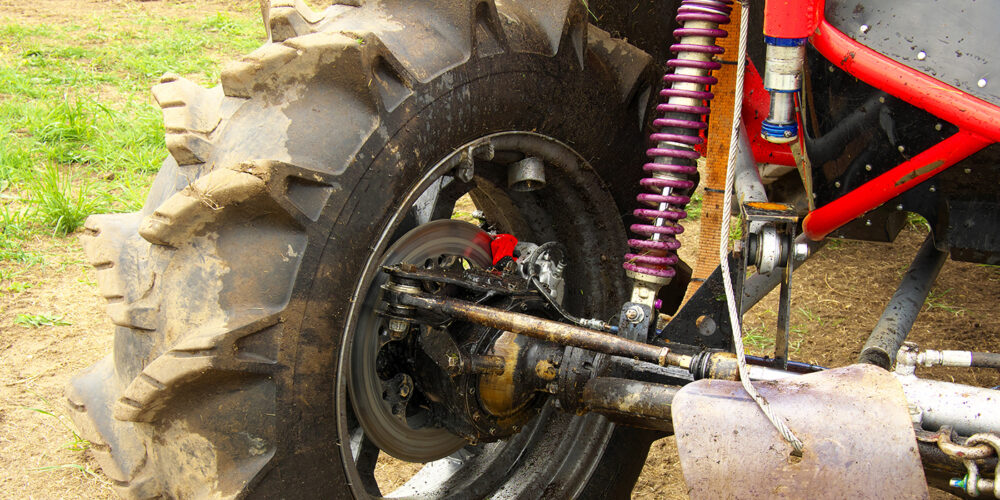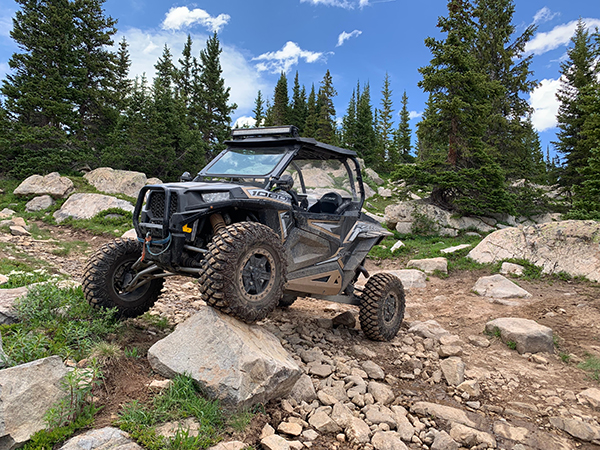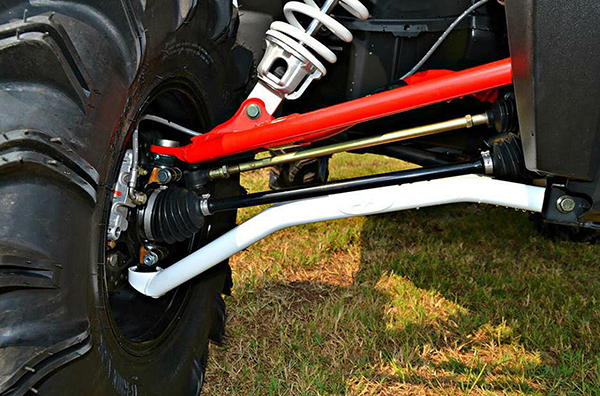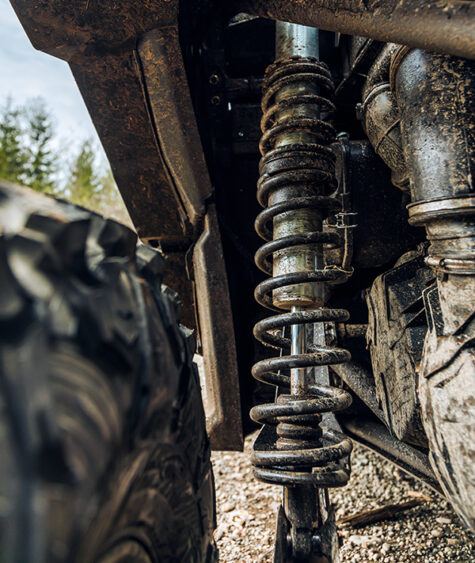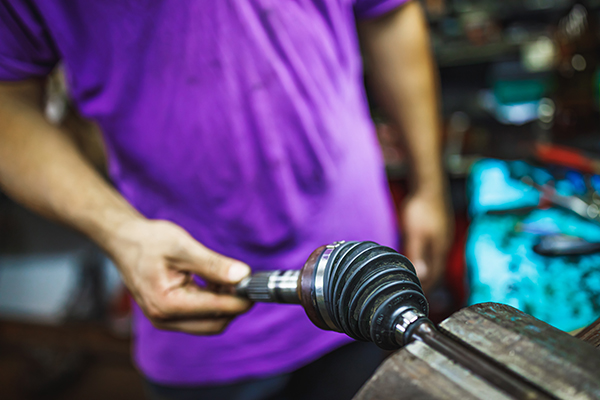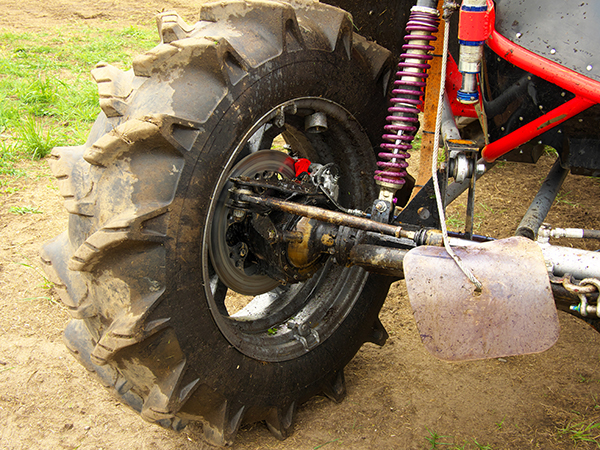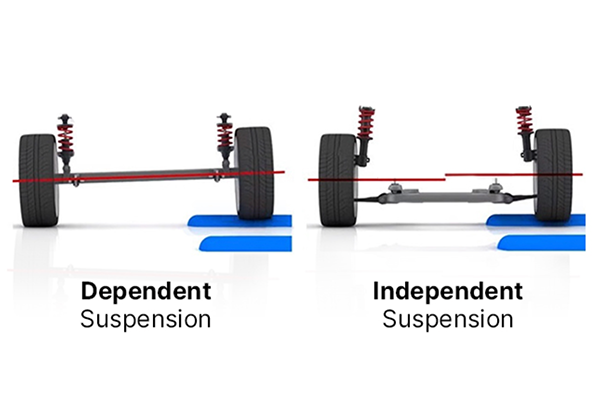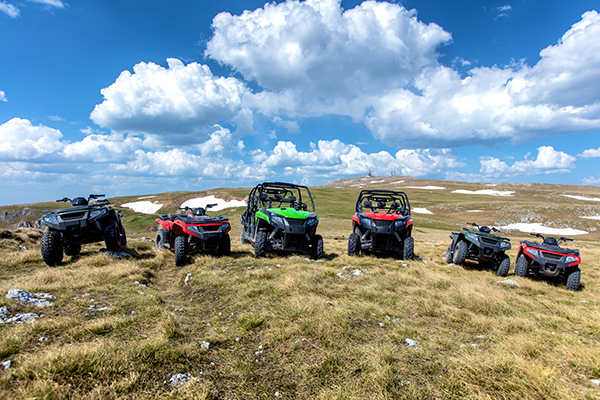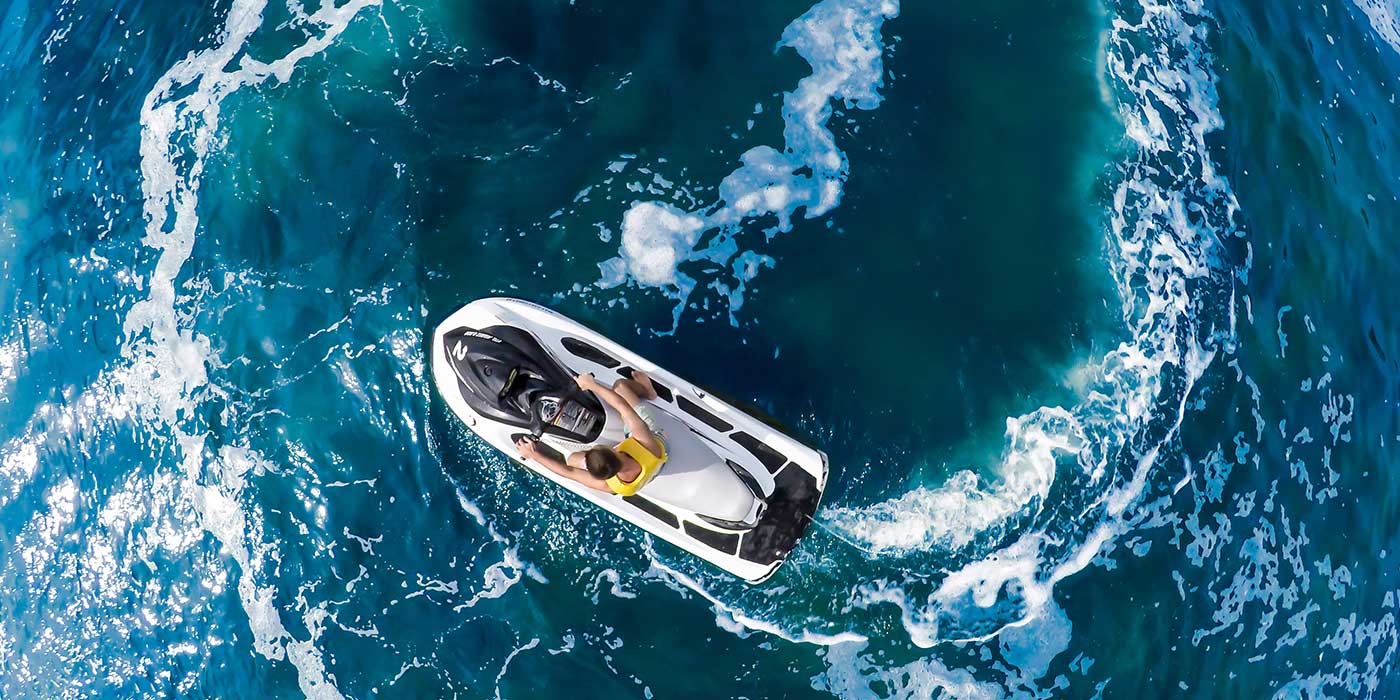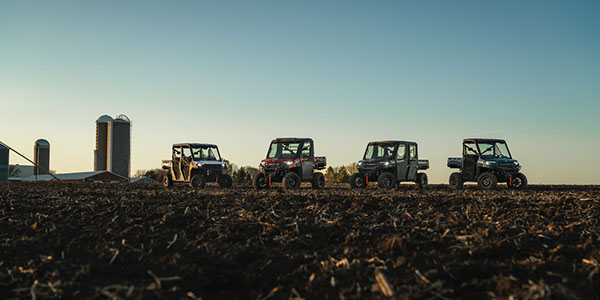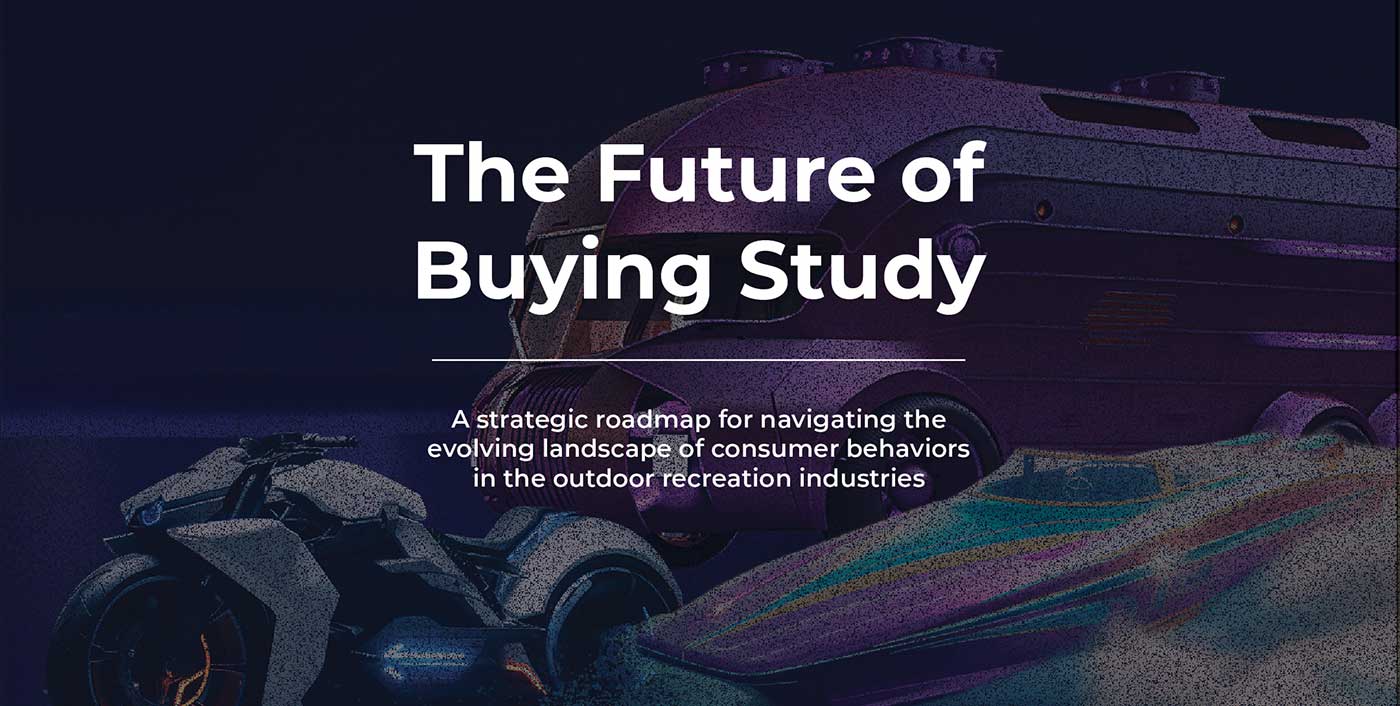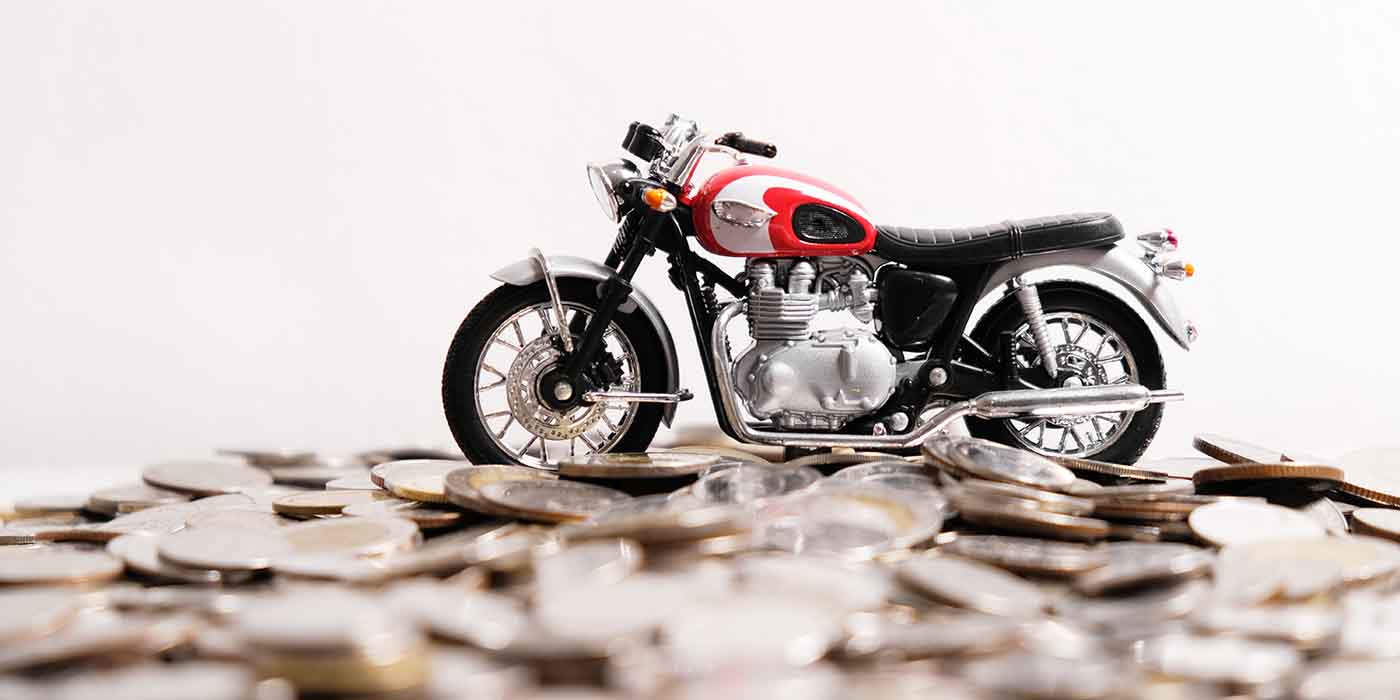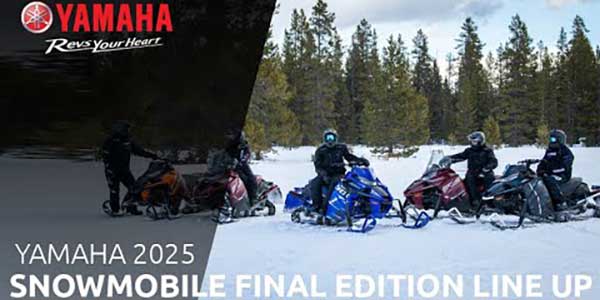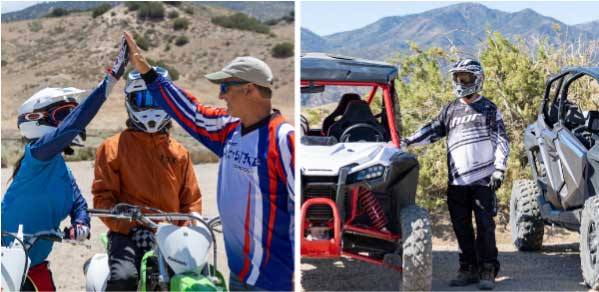Off-road adventures hold an undeniable allure, an experience that unites man and machine against nature’s challenges. Whether it’s navigating rocky trails, climbing up sand dunes or conquering muddy expanses, the suspension system of an ATV or UTV is often what sets it apart. The evolution of suspension systems over the years has allowed for a convergence of science and engineering that turns rugged landscapes into exhilarating playgrounds.
But what does the suspension system of a powersports vehicle actually entail? Most riders likely know the purpose and location of the shocks, but there are many more components that work in tandem to create a smooth ride for the passenger.
Suspension Components
Picture the underbelly of an ATV or UTV – at the core of the ensemble are the suspension arms. These structures link the wheels to the chassis, orchestrating the interaction between tires and the terrain. They come in various forms, including A-arms, trailing arms, and radius arms.
A-arms, also known as control arms, maintain wheel stability and provide a foundation for shocks to deliver comfort. Trailing arms act as pivot points at the rear, preventing the axle from shifting during rides. Radius arms, often found on machines with trailing arms, control wheel motion longitudinally. Upgrading these arms, especially for aggressive riders, can boost durability and performance.
On the topic of shocks, these components wield a critical role in the suspension architecture. With hydraulic fluid-filled cylinders and a piston, shocks convert rough terrain into a more controlled experience. As wheels bounce over obstacles, the shocks compress and decompress, orchestrating the suspension’s rhythm, and rendering the ride smoother and less bumpy.
The springs are another foundation on which this ensemble rests. Coiled, leafed, or torsion-based, springs share the responsibility of bearing the vehicle’s weight, offering flexibility for absorbing the shocks and keeping the wheels grounded.
Ball joints form the crucial connection between suspension arms and wheel hubs, permitting multidirectional movement. Bushings, connecting suspension arms to the vehicle’s frame, reduce friction and dampen vibrations, enhancing ride quality. Upgrading to robust bushings can reduce the frequency of replacements and improve the overall ride experience.
Steering precision significantly influences ride quality. Tie rods serve as pivotal connections between the steering rack and wheels, determining the direction of travel. Tie rod ends, susceptible to wear over time, affect alignment and steering. Replacing stock tie rods with heavy-duty alternatives can prolong their reliability. The rack and pinion system convert wheel movements into directional changes, another vital component of steering.
Enter anti-sway bars, which maintain the stability of the vehicle during high-speed corners. These bars link the left and right sides of the suspension, distributing lateral loads and minimizing body roll. While these bars maintain stability on the road, off-road aficionados might choose to set them aside for a more unbridled wheel articulation.
Maintenance and Upgradability
Regular maintenance is key to keeping your UTV or ATV suspension in peak condition. Here are some essential tuning and repair tips:
Shock Absorbers
- Maintenance: Regularly inspect shocks for leaks, damage, or worn-out components. Re-grease bushings and pivot points as recommended by the manufacturer.
- Upgrade: Adjust shock settings to match your riding style and terrain. Stiffer settings provide a firmer ride, while softer settings enhance comfort. Consult your vehicle’s manual for guidance on adjustments.
Suspension Arms
- Maintenance: Inspect suspension arms for cracks or signs of wear. Grease ball joints regularly to prevent premature wear.
- Upgrade: Consider upgrading to adjustable suspension arms for fine-tuning camber and alignment settings. This enhances control and handling, especially on challenging terrain.
Ball Joints and Bushings
- Maintenance: Grease ball joints and inspect bushings for wear or damage. Replace worn components promptly.
- Upgrade: Upgrade to heavy-duty or greaseable ball joints and bushings for improved durability and ease of maintenance.
Steering Linkages
- Maintenance: Regularly check tie rod ends for wear and tear. Grease them as recommended by the manufacturer.
- Upgrade: Upgrading to heavy-duty tie rods can enhance steering precision and durability, especially for aggressive riders.
Suspension Types
ATVs and UTVs are typically equipped with either an independent suspension system or a solid rear axle-dependent suspension system.
Independent suspension allows each wheel to move independently. This design is a masterclass in adaptability, offering superior wheel articulation, enhanced traction, and a velvet-smooth ride across the ever-changing terrain. This is typically the best option for those who are primarily going to use their vehicles off-road and on rough and unpredictable terrain.
In contrast, the dependent, solid rear axle suspension is a tribute to tradition, a configuration where both wheels on an axle move in unison. Simplicity and ruggedness define this design, but it comes at the cost of a slightly rougher ride, particularly on uneven terrain.
A dependent suspension system has springs and shock absorbers that are connected between a frame member or axle, so they only allow one wheel at a time to move up or down relative to the other wheel. This helps keep both the vehicle’s wheels on the ground for traction, but is less comfortable for passengers because it does not level out when going over bumps.
Tuning
Preload is the initial tension adjustment on the springs, fine-tuning the ride height and sag of the suspension. Compression damping plays with the resistance during compression, affecting how quickly the suspension absorbs impacts. Rebound damping controls the speed at which the suspension extends after compression. Lastly, ride height adjustments can elevate the vehicle for heightened ground clearance or ground it for enhanced stability.
Another aspect of tuning is sag, the suspension’s percentage of travel while stationary, which must be calibrated correctly. Inadequate sag can lead to a harsh ride, while excessive sag may result in bottoming out. Preload adjustment empowers riders to adapt suspension for diverse conditions, accommodating passenger loads, luggage, and even altering ground clearance.
As you can tell, suspension matters for these powersports vehicles. Make sure your suspension is being maintained and setup to give you the best ride and performance possible.

